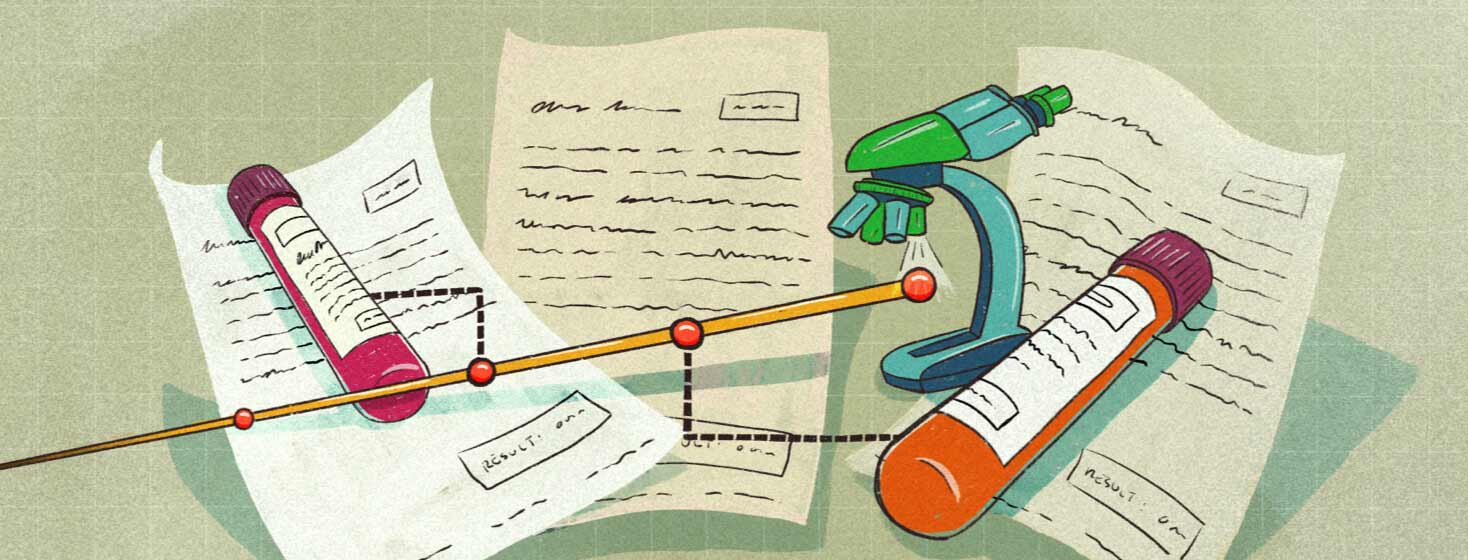How Is Myasthenia Gravis Diagnosed?
Reviewed by: HU Medical Review Board | Last reviewed: November 2024 | Last updated: November 2024
Myasthenia gravis (MG) is diagnosed using a combination of a health history, physical exam, and a variety of tests. While myasthenia gravis (MG) is the most common disorder of nerve-muscle transmission, it is still a rare condition. Having a rare condition like MG that can have vague symptoms can make it hard to get an accurate diagnosis.
Once your doctor suspects you have MG, the most common tests used to confirm this will be:1-4
- Pre-testing (also called bedside testing)
- Blood tests
- Nerve conduction studies and electromyography
How do these tests help diagnose MG?
Pre-testing (or bedside testing) includes a complete physical exam. This includes tests for:1,4
- Breathing and lung function
- Vision and eye movement
- Muscle strength, especially in the head and neck
These tests should be repeated with every follow-up appointment to track any changes.1,4
An ice pack test may be performed in people with droopy eyelids. With this test, an ice pack is placed on the closed eyelid for a few minutes. If the droopiness gets better when the ice pack is removed, it may suggest MG. The results of this test can be unreliable, so it is not always performed. Other tests will still be needed to confirm MG.1
Blood tests will show whether the body is making the antibodies common in people with MG. Antibodies are proteins the immune system makes to attack what it thinks are foreign invaders like bacteria or viruses. In people with MG, antibodies are made that attack healthy areas called the neuromuscular junction. This is an area that transmits directions from the nerves to the muscle, telling it to move. People with MG most often make antibodies that prevent the nerves and muscles from communicating. MG antibodies include:1,2
- Acetylcholine receptor (AChR)
- Muscle-specific tyrosine kinase (MuSK)
- Low-density lipoprotein receptor-related protein 4 (LRP4)
Around 8 out of 10 people with MG will have AChR in their blood. Only 1 out of 10 will have the MuSK antibodies, and even fewer will have LRP4.1
Between 6 and 12 percent of people with MG will have seronegative myasthenia gravis, meaning they have none of the common antibodies. This is more common in people with ocular MG.1
People with MG are more likely to have other autoimmune diseases such as thyroid disease, lupus, or rheumatoid arthritis, so blood tests for these conditions may also be done.
Tests of electrical activity
To diagnose MG, your doctor will order several types of electrical tests to test your nerves, neuromuscular junction, and muscles. These tests also help identify where neurologic symptoms may be coming from.
Nerve conduction studies (NCS) measure how fast and how strong the electrical activity is in your nerves. This test can help assess whether damage to nerves (neuropathy) is contributing to weakness.1,4
Electromyography (EMG) is an electrical test of your muscle cells and can help assess if your muscles are functioning properly. EMG can also be used to test the activity of the neuromuscular junction. The most common test used to diagnose generalized MG is repetitive nerve stimulation (RNS). RNS assesses how your muscle response to nerve stimulation changes with repeated stimulation over time.1,4
Some people with MG may not have a positive RNS test or other findings on standard NCS and EMG tests. An even more sensitive test, called single-fiber electromyography (SFEMG), may be needed in these cases. SFEMG is a more sensitive test but is not as widely available, as it requires more expertise to perform.1,4
This or That
Where are you in your diagnosis journey?
Imaging tests
Once myasthenia gravis has been diagnosed, your doctor will order images of your upper chest. CT and MRI scans will help show if the thymus gland is unusually large or whether it has an growth called a thymoma.4
Edrophonium test: The test no longer used
The Tensilon, or edrophonium test, is no longer used in the United States and many other countries, though it was once common. The drug used to perform the test, edrophonium, is no longer sold in the United States, and its results were unreliable.1
Finding the right diagnosis
It can be hard to get a correct diagnosis when you have myasthenia gravis (MG). Symptoms can come and go, and change in severity. People often report having droopy eyelids, double vision, or trouble swallowing in the morning and then are better minutes or hours later.3
This can make it hard to know which type of specialist to see. It can also make it hard for a doctor to know which tests to choose to figure out what is wrong.
It takes the average person with MG about 3 years to get a correct diagnosis. One survey found that almost half of people with MG got at least 1 incorrect diagnosis. Many people finally get the right diagnosis from a neurologist, especially one who specializes in neuromuscular issues.2
Doctors often mistake the symptoms of MG for:1-3
- Multiple sclerosis or other autoimmune conditions
- Amyotrophic lateral sclerosis (ALS)
- Fibromyalgia
- Chronic fatigue
- Thyroid disease
- Bell’s palsy
- Stroke
- Mental health disorders such as anxiety, depression, panic attack, or hypochondria
- Flu
